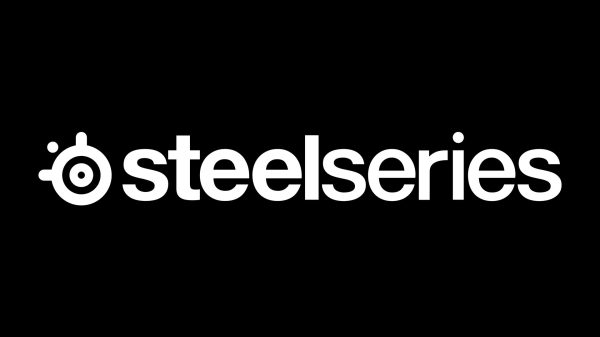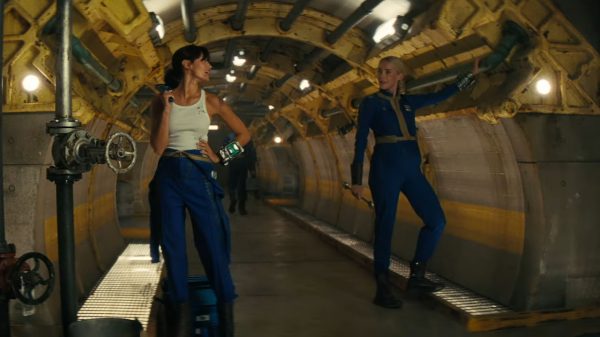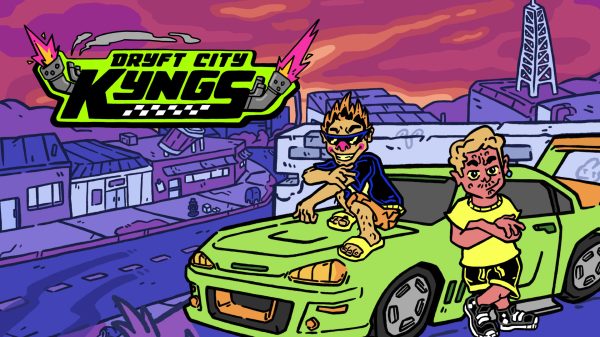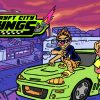Back at PAX Australia in 2019, the recently formed Drop Bear Bytes exhibited at the show with little more than a concept and the hopes and dreams of its creators. The elevator pitch: Fallout in Australia (it’s a quick elevator). But not the Fallout you’re likely thinking – the one with Bethesda and Todd Howard’s craftmanship all over it. No, this is pre-Todd Fallout; this is Fallout as developed by Interplay (1997) and Black Isle Games (1998), a CRPG that includes extensive and immersive dialogue and turn-based combat. Drop Bear Bytes was aiming to infuse that DNA into its project Broken Roads, and while it may have only been a teaser on display in 2019, it captured our interest and we’ve been hanging for it ever since. Fast forward to late October 2023 and we’re roughly two weeks away from the release of Broken Roads on Xbox Series X|S and PC (with PS5 and Switch to come later). We were able to sit down and chat with creative director and Drop Bear Bytes co-founder Craig Ritchie about Broken Roads, its development and how they got that true blue Aussie flavour.
WellPlayed: When did development on Broken Roads begin?
Craig Ritchie: The first idea of the post-apoc game that would become Broken Roads came up between Christmas and New Year’s 2018, we founded Drop Bear Bytes in January 2019, did the original designs in January and February of that year. By March we’d designed the basic story, key characters and the Moral Compass, but actual development got underway around the middle of 2019.
WP: How did the idea for Broken Roads come about?
CR: It started off with what I thought I could reasonably do with minimal funding and a team of friends helping out with the basics. It was an Oregon Trail-style road trip through a generic post-apocalyptic world. It had nothing to do with Australia at first, but then one day – and I don’t recall exactly how it came to mind – I thought why not have this across Australia?
I had not seen many games set in Australia and after doing some more research I was actually surprised how few there were – neither already released titles nor any games that I could find in development.
WP: How much has Broken Roads changed since it was first announced in 2019?
CR: Since the first announcement, which was October 2019, the major change has been in the quality of the art, both the characters and the environments. By this point, which was now about 10 months into development, the overarching story, the main companions (as in, party members) and some of the major supporting characters were already designed, but there’s probably not a single asset in the game which hasn’t either been completely redone from the ground up or significantly improved since the announcement trailer and the demo we showed at PAX Aus 2019.
The team has also grown, with some highly experienced and very talented artists, writers and developers having contributed to everything from the quality and variety of animations to just polishing and improving the overall feel of things…that feeling that comes when all the parts work together.
Take combat – another one of the things that has been entirely reworked. It used to be grid-based, because the game was 2D tile-based, but with the move to 3D we also moved to freeform combat. Many of the rules (i.e., one grid space is one metre is one Movement Point) stayed the same, but the combination of improved graphics, high-quality VFX, snappy animations and correctly timed and produced audio results in an entirely different feel to it.
WP: What made you decide to base the game’s world on Western Australia over other Australian states?
CR: It was at first going to be a trip from Perth to the Daintree, through WA, across the Nullarbor into SA and VIC, along parts of inland NSW and then up the Queensland coast, but with the move towards deeper stories we quickly realised that doing the whole of Aus – which works for a road trip for sure – at the level and depth we wanted to just wasn’t going to be remotely possible, so we reduced the scope to just WA. Then we reduced it to just the Wheatbelt region of WA, and even so we have had to cut out areas or abandon stories we wanted to tell just because we’re limited by time (and word count costs, as the game is being localised into numerous languages and every word increases that cost).
WP: What sort of research have you done to give the world and its inhabitants that genuine Australian flavour?
CR: The main thing was travelling through the area where the game is set. We’ve done three trips between Brookton, Merredin and Kalgoorlie areas (and some of the key spots north and south of the highway there) to really get a feel for the people and places, and see those kinds of things you don’t always spot on Google Maps or Street View.
We read a lot of Wikipedia and Wiki Travel pages, and browsed the online archive of old newspapers that Trove (by the National Library of Australia) has digitised, so like who did what in these towns during particular dates, and just getting a feel for the place both how it is now and how it evolved over the centuries (you can read stories from newspapers dating back to the early 1800s).
There was also a ton of watching Aussie Gold Hunters, Outback Opal Hunters and also documentaries and films set either in WA or just across Australia, reading old books on Australian Folklore, the writing and journalism of people in these Wheatbelt towns, and the invaluable time spent talking to barmen and pub patrons in the places we stopped. That’s one way of really getting a feel for it.
Most recently, I got to see some places near Kellerberrin with Mick and Kris Hayden of Njaki Njaki Aboriginal Cultural Tours, and this is all essential for getting the content right.
WP: The art style expertly encapsulates the Australian outback yet it has its own flair. How did you go about visualising this spin on apocalyptic Australia?
CR: The main thing was just making sure the team had accurate reference pics, which we obtained (it must be close to 2,000 photos by now) from our trips, and sending them YouTube clips where someone may have uploaded drone footage or done a tour of, say, Merredin. We’ve paid attention to the colour of the earth and the rocks, provided numerous references for the plant life and the exact colour of the trees and so on. It’s not just the art style we wanted, but also that it’s authentic.
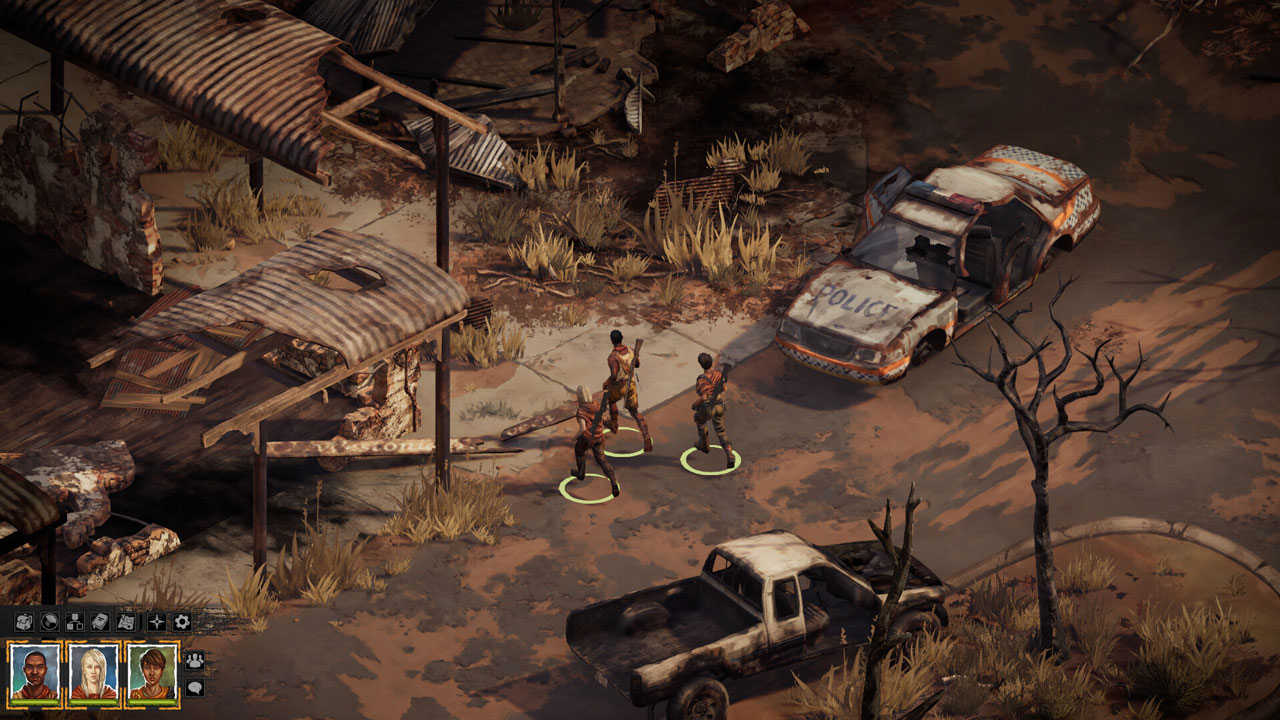
WP: What was it about the CRPG genre or system that drew you to it? And does the success of something like Baldur’s Gate make you feel more confident about modern audience’s appetite for these kind of old-school, roleplaying experiences?
CR: It’s my personal favourite interface for RPGs. I think that traditional isometric perspective has a particular feel that isn’t present in first-person RPGs like Skyrim (and don’t get me wrong, I think Skyrim and many of the recent Bethesda titles are incredible games).
Shadowrun Returns, Pillars of Eternity 1 and 2, Divinity Original Sin, Tyranny, Disco Elysium – these all proved the old-school approach, with modern quality of life improvements or new innovations on the old formula – absolutely had an appeal for modern gamers.
We did a lot of homework in 2019 as well, assessing the market, competitor titles, titles that had recently launched or would be coming out during the development of Broken Roads. Disco Elysium’s success in particular showed how popular the genre can be to a wider audience as well, and we’ve added in more pacifist quest resolutions as a result, so that Broken Roads can be enjoyed by people who are not interested in RPG combat at all, for instance.
Baldur’s Gate 3 seems like an absolutely phenomenal game (I’ve not played it…I am saving it for after the launch of Broken Roads) and Larian has done something amazing there. Hopefully people who enjoy that will also find something appealing in Broken Roads!
WP: Often when we talk about wanting to see more Australian representation in the gaming space it usually comes in the form of some casual slang and a thick accent (both of which we love), but what is it about Broken Roads that you think best embodies the Aussie spirit?
CR: That we show it is not just one thing, really, is probably what we’re most proud of. Like showing a wider range of Australians and Australian culture, from the bogan stereotypes to the ‘just a pretty normal bloke going about his business’ to the political big-dogs and aspirants. There’s a seriousness when it’s required but also the levity, humour and just-get-on-with-it attitude you can see in certain moments as well.
WP: The moral compass system you’ve designed sounds like it will adapt nicely to player choices but how do you go about ensuring that players aren’t locked out of certain options too early? Is there room to change and become a different kind of survivor?
CR: Each choice on the Moral Compass has both an angle and a radius. The angle determines where (in 360 degrees) the decision is located around the compass, in the four quadrants, while the radius determines how far from the centre to the periphery of the compass a choice is.
Anything with a radius of 30 or lower is available to all player characters because of Moral Tendencies – the brightly-coloured sections of each quadrant near the centre – which are always available. Each decision a player makes on the Moral Compass extends the Moral Tendency of the corresponding quadrant, allowing them to make those ‘low-level’ decisions even if the option is outside of their World View (the golden arc), which determines the majority of the dialogue choices available.
In the early game, we’ve intentionally added more low-level choices so that beyond the six questions in character creation you’re also able to make less significant choices, or also just express how your character thinks through responses in the origin stories. These low-level choices crop up throughout the game as well, so we hope players will enjoy being able to shape their character the whole way through without any kind of jarring restrictions on however they want to roleplay in Broken Roads.
WP: How deep can your relationships with companion characters get? Are we going to be getting unofficially hitched or just stay mates?
CR: We don’t have full romances like some other RPGs, but without being too spoiler, you can get hitched – but for the most part, you’ll just be staying mates!
WP: You actually enlisted indigenous people to help with the project. How valuable was their contribution and insights?
CR: I knew from the outset that I could never write this content myself – I had only been living in Australia for a little over two years when we started Drop Bear Bytes – and so getting input from appropriate people so that we could ensure authentic and respectful representation was something we decided to do right from the start.
Their contribution has been critical, not only for learning more about different indigenous cultures in general, but also to have the right people (which included the appropriate elders) designing, writing, voicing and generally overseeing all of that content. A huge thanks to Karla Hart for her help both with the writing and the voice-acting work she has done, and also for putting us in touch with the right people – or going out of her way to have certain things looked at by the right elders.
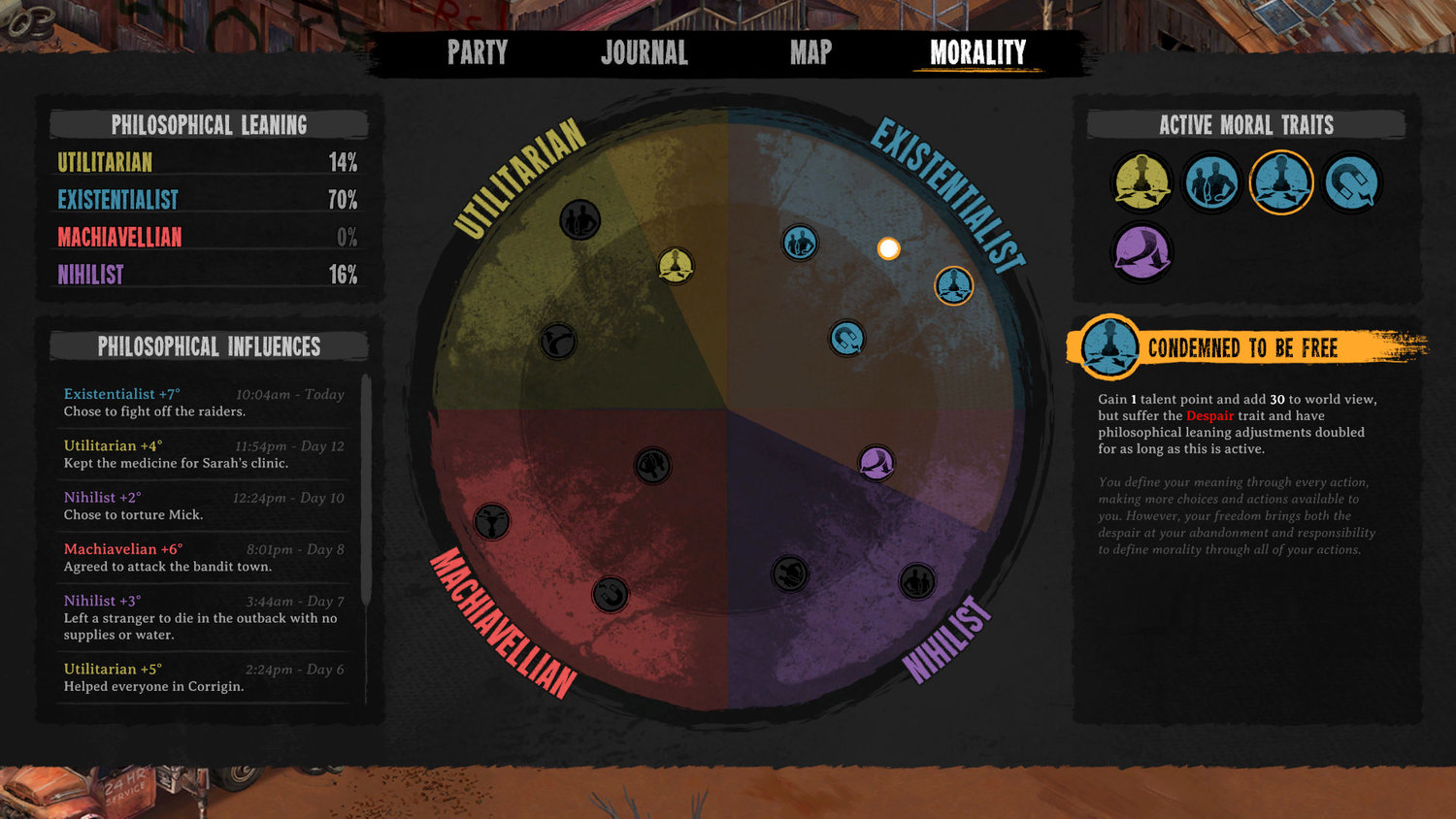
WP: How long will an average playthrough of Broken Roads take?
CR: We’re thinking about 25 hours, but we know the game can be completed much quicker and also much, much longer than that. I don’t even know what a full completionist playthrough will entail, but we had one of the playtesters at 30 hours who was not yet at the half-way mark in the game. There is a lot of side content and a lot to explore for those willing to take their time and really lose themselves in Broken Roads, and there is a lot of replayability. Four origin stories, four general moral leanings to follow with much more nuanced moral leanings depending on exactly where in each quadrant your World View overlaps, multiple paths through the middle of the game, and multiple endings.
It’s also, due to the way the story has been set up and how many of the scenarios are designed, impossible to do or see everything in one playthrough.
WP: Can members of your team die? And if so, what are the consequences?
CR: Not really – we’ve made some narrative choices that mean we don’t want companion death in combat. It’s more of a Pillars-like approach where if some of your party are downed in combat, as long as one member of the party survives, everyone is revived with 1 hit point. Only if the whole party is downed in combat do you all die and face a game over.
WP: How many different endings will the game have?
CR: In terms of endings, there are four main outcomes the game can have, but these have multiple ways they play out depending on player choice, making for a massive number of permutations. We’ve designed around 12 ‘main’ endings, but also some possible ‘hidden’ endings depending on particular choices which I won’t go into as part of the fun for players who will be discovering these things as they play.
WP: Of the four playstyles, which one is the most popular at the studio?
CR: That depends on the person – my favourite is the Surveyor, because I just think it’s a cool post-apoc job, going about and finding new places, exploring, mapmaking, following up rumours of new settlements and the like, handling some things with diplomacy and sometimes having a fight.
Others are into the Barter Crew because of its unique trade/venture possibilities, and there are a couple of people exploring full-pacifist runs for all of the origin stories (but heads up that this is of course the least compatible, although not impossible, with being a Hired Gun!).

WP: The CRPG experience seems like it is more suited to PCs. What were the challenges in developing Broken Roads for consoles? Were there any sacrifices you had to make?
CR: Just getting the control scheme to work well on a gamepad, really, but we’d always planned on supporting the Xbox controller (on PC) from day one. The Baldur’s Gate Enhanced Editions, Pillars, Wasteland and Divinity all run great on consoles. I played through all of Torment: Tides of Numenera on PS4 and felt quite comfortable with the controller by the end of it, even though my own preference is mouse and keyboard.
We ended up with a virtual cursor in exploration and auto-highlighting/selecting interactables, doors to open, people to talk to and so on (while on the PC you have to hold down TAB to see points of interest, speakable NPCs etc, the gamepad has these work based on context/proximity, but it feels pretty good).
We haven’t had to sacrifice too much, thankfully, but there was a lot of additional work put into making the UI and the different tabs (inventory, journal etc.) work smoothly on both mouse and gamepad.
WP: What’s one of the things you’re most excited about seeing when the game does release?
CR: For sure seeing how people discuss their different experiences of Broken Roads based on early choices that branch out into significant differences later on, or the quest resolutions that their moral leaning took them down. I hope that players get an interest in some of the philosophical topics in Broken Roads and pursue them further – we only scratch the surface of some big concepts and I am looking forward to seeing how people talk about them in lengthy Reddit threads, or our Discord channels.
WP: Thanks for your time. Best of luck with the game’s release.
CR: Thanks – just a couple weeks to go until we see what the world thinks of our game!
If Broken Roads sounds like your kind of jam and you haven’t added it to your Steam Wishlist, you can do so below.





